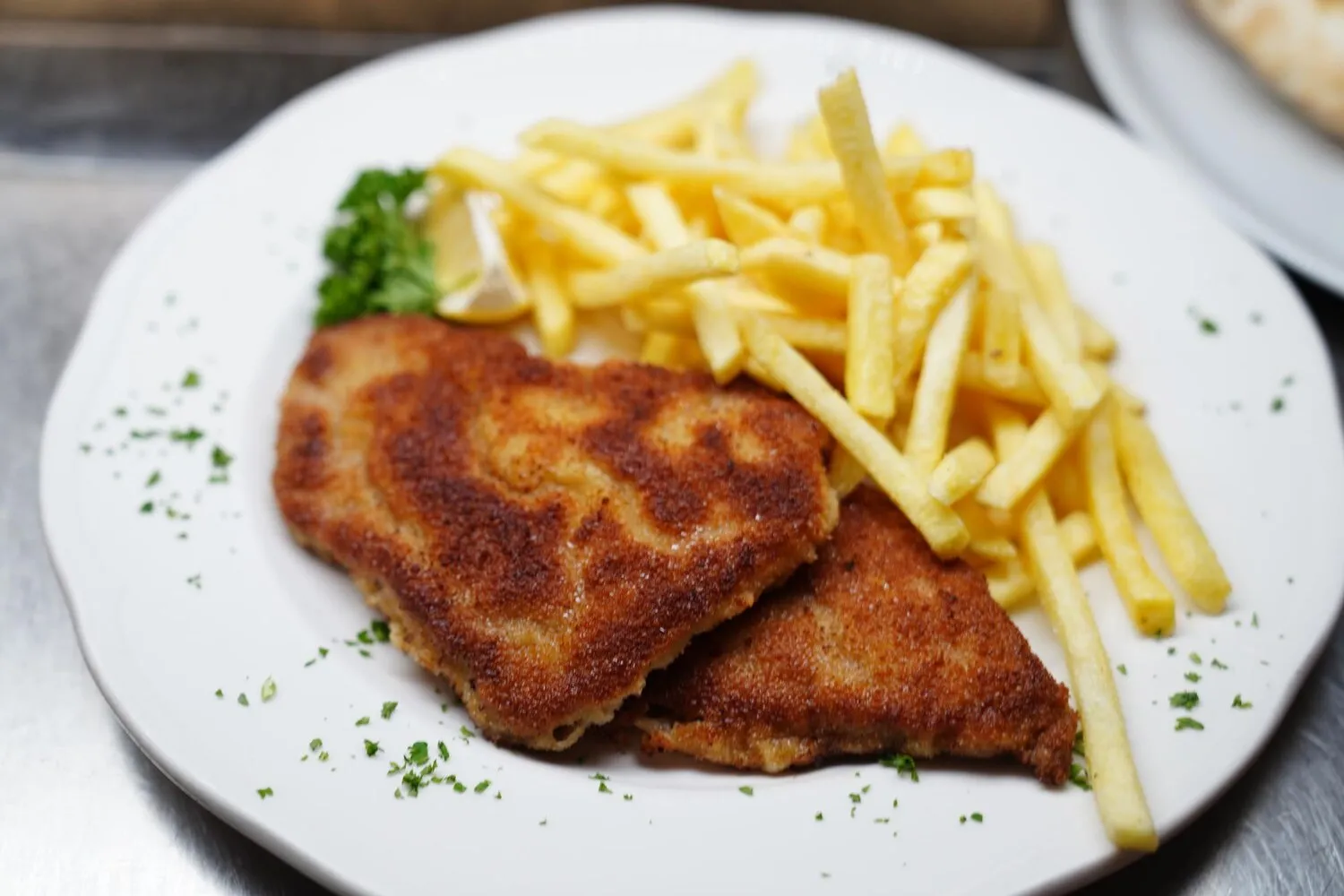
Schnitzel
Breaded cutlet of pork or veal, pan-fried and served with various sides (often spaetzle or potatoes).
Nutrition Facts
* The % Daily Value (DV) tells you how much a nutrient in a serving of food contributes to a daily diet. 2,000 calories a day is used for general nutrition advice.
The Old Bavaria Haus Restaurant
While the exact origins are debated, Schnitzel is often linked to the Italian 'cotoletta alla milanese,' suggesting possible historical influence from Italy. However, the Viennese Schnitzel, as we know it today, is generally accepted to have originated in Austria during the 19th century.
Schnitzel is a quintessential Austrian dish, deeply ingrained in the country's culinary identity. It's a staple in restaurants and households alike, representing comfort food and tradition.
National Dish
Wiener Schnitzel is considered one of Austria's national dishes, a symbol of its culinary heritage and a source of national pride.
Restaurant Staple
It is a common offering in Austrian restaurants, ranging from traditional beisls (taverns) to high-end establishments.
Home Cooking
Schnitzel is frequently prepared at home, enjoyed as a family meal, and often features in festive gatherings.
The flavor profile is primarily savory, with a focus on the crispy, golden-brown breading complementing the tender meat. Butter is traditionally used for frying, lending a rich, nutty flavor.
The main flavors come from the combination of the veal (or pork), the crispy breadcrumb coating, and the butter used for frying. The meat itself provides a subtle, savory foundation. The breadcrumbs, seasoned with salt and pepper, create a textural contrast and add a mild, toasted flavor. The butter imparts a rich, nutty flavor that enhances the overall experience. Lemon wedges are often served alongside, adding a bright acidity that cuts through the richness of the dish.
Meat Preparation
Pound the meat to an even thickness (about 1/4 inch) to ensure even cooking and tenderness. Use a meat mallet for this purpose.
Breading Technique
Follow the standard breading procedure: flour, egg, and breadcrumbs. Ensure the breadcrumbs are fine and even for optimal crispiness. Season the breadcrumbs with salt and pepper.
Frying Temperature
Maintain a consistent temperature (around 325-350°F or 160-175°C) when frying. Using clarified butter (or a neutral oil) prevents burning and adds flavor.
Serving Suggestions
Serve immediately after frying for maximum crispness. Traditionally, it is served with a lemon wedge. Popular side dishes include potatoes (boiled, fried, or mashed), parsley potatoes, or a simple salad.
Explore additional Classic German dishes and restaurants
Explore Classic GermanDiscover top dining spots and culinary experiences in New Westminster.
Explore New WestminsterLearn more about the food culture, restaurant scene, and culinary heritage of Canada.
Explore Canada